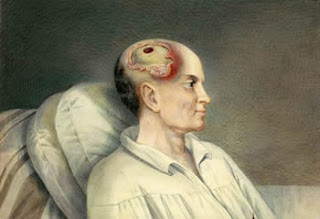![]() Fort Ticonderoga President Peter S. Paine Jr. has suggested in a memo forwarded to the Plattsburgh Press Republican that the historic site (a veteran of the French and Indian and American Revolutionary wars as well as the War of 1812) has seven options to avoid permanent closure, none of them good.
Fort Ticonderoga President Peter S. Paine Jr. has suggested in a memo forwarded to the Plattsburgh Press Republican that the historic site (a veteran of the French and Indian and American Revolutionary wars as well as the War of 1812) has seven options to avoid permanent closure, none of them good.
Paine wrote in the memo that “the fort is running through its available endowment funds to pay the Mars Education Center bills, and, in the absence of a major infusion of funds, the fort will be essentially broke by the end of 2008.”
His options include applying for new short-term loans (perhaps from the Essex County Industrial Development Agency), banking on a new capital campaign to raise $3 million to $5 million (Paine had said the Fort needed 2.5 million), asking the state for a bailout or to take over ownership of the fort, selling some of the fort’s property or collections (it holds paintings worth millions, including Thomas Cole’s 1831 “Ruins of Fort Ticonderoga,” but its ownership is in dispute) or closing for an indefinite period until the finances are sorted out.
Paine’s proposals come after a year of chaos at the fort began when Deborah Mars, a Ticonderoga native married to the billionaire co-owner of the Mars candy company Forrest Mars Jr., bailed on their long-time support for the fort just before completion of the new $23 million Deborah Clarke Mars Education Center. The Mars paid for nearly all of the new building’s construction but left before it was finished leaving Fort Ti about a million dollars in debt. When the building bearing their name opened this month, they didn’t show. Mr. Mars said disagreements with fort’s Executive Director Nicholas Westbrook were the reason why. Paine replaced Deborah Mars as the fort’s president.
A newly released study of Revolution War and War of 1812 sites by the National Park Service [pdf] points to the problem of private ownership of some America’s most important heritage sites:
Nonprofit organizations dedicated to preserving, maintaining, and interpreting their historic properties own all or portions of 100 Principal Sites [identified by the report]. Ownership of four Principal Sites is unknown currently. Private owners still control most of the Principal Sites, especially the battlefields and associated properties made up of large land areas. Privately owned sites or portions of sites are without any known form of enforceable legal protection. Many private owners maintain and care for their historic properties, but without legally mandated protection, the properties could be damaged or destroyed at any time.
Fort Ticonderoga had already been identified in the report as a Priority I (“these sites need immediate preservation or may be lost by 2017″-) facing a “medium” level of threat. The threat is real for the already economically depressed Adirondack region of New York State, and the locals are restless.
A Short History of Fort Carillon / Fort Ticonderoga
The fort located at the north-south choke-point between Lake George and Lake Champlain was ordered built by French Governor-General Vaudreuil (the French Governor of Canada) as the southernmost fort of the French Empire in the New World as a bulwark in anticipation of attacks on Fort St. Frederic and the French settlements at today’s Crown Point, New York (currently being excavated) and Chimney Point, Vermont. Named Fort Carillon, it was built by soldiers and settlers in 1755-56. The following year French General Montcalm used Carillon as a base to attack British Fort William Henry at the southern end of Lake George. In 1758, British General Abercromby led an overwhelming British and Colonial Army in a attack on the fort that ended disastrously. American colonial forces under Benedict Arnold and Ethan Allen took the poorly manned fort in the opening engagements of the American Revolution without a fight in 1775. It was retaken by Gentleman Johnny Burgoyne in 1777. Native Americans from the Algonquin, French Mohawk, Huron, and Nippissings are among those associated with the history of the fort.
It is considered one of America’s oldest heritage tourism sites with tourists arriving in numbers in the 1830s (by way of comparison, the Hasbrouck House, George Washington’s headquarters at Newburgh, NY, became the first historic house museum in the United States in 1850). In 1783, George Washington visited the Fort with New York’s Governor Clinton. Following the Revolution New York State granted the Fort and its surrounding grounds to Columbia and Union Colleges. In 1791 future presidents Thomas Jefferson and James Madison both visited the fort.
William Ferris Pell purchased 546 acres containing the ruined fort in 1820, but it wasn’t opened to the public until 1908. The non-profit Fort Ticonderoga Association took control in the 1930s and members of the Pell family formally loaned many of the paintings and artifacts to the fort in the 1940s. Mount Independence, the high ground on the Vermont side of Lake Champlain where many colonial troops were encamped during occupation of the fort is under the care of the Vermont Division for Historic Preservation. The ruins at nearby Crown Point are a New York State Historic Site.
This post also appeared at Adirondack Almanack, the premiere blog of the culture, politics, history, and environment of the Adirondacks.


